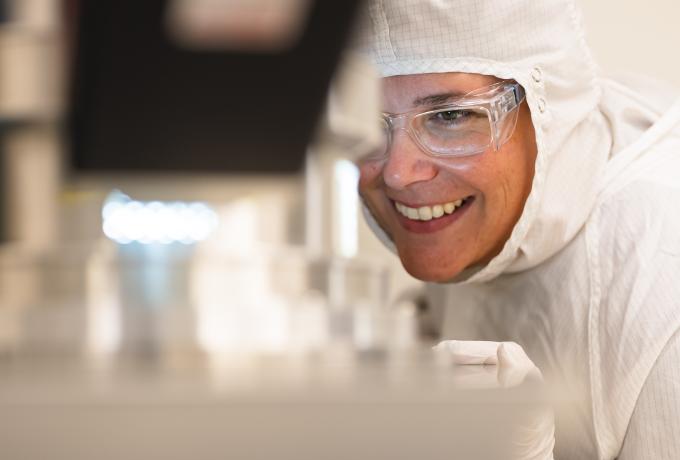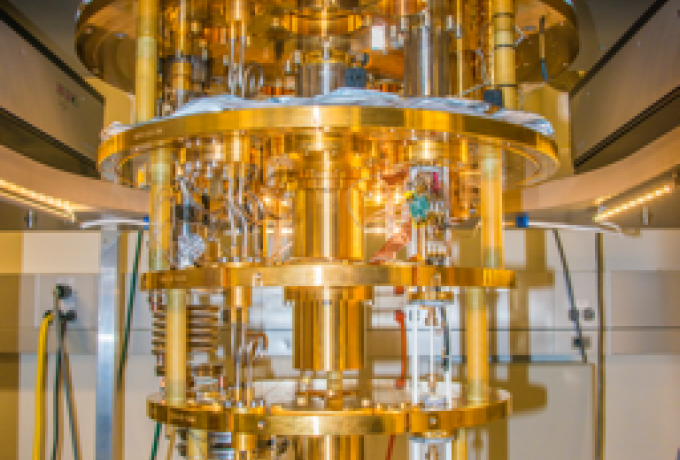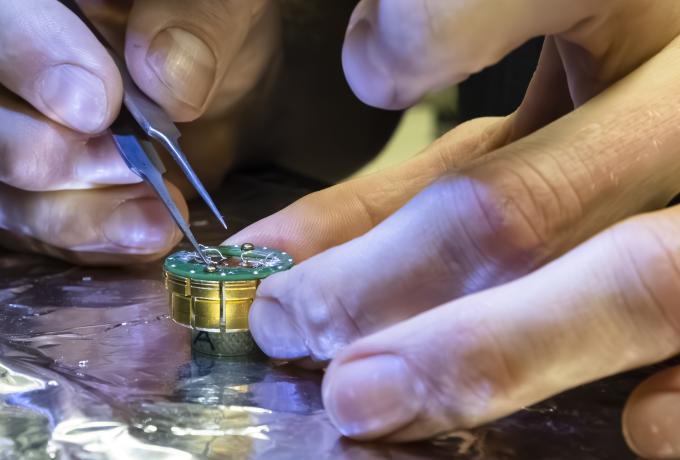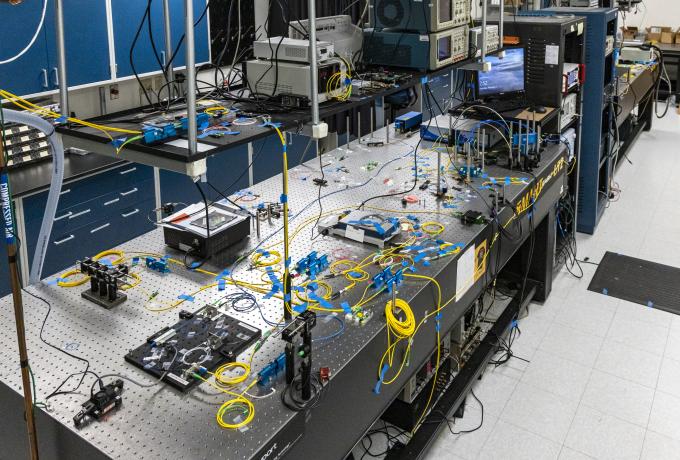State-of-the-art laboratory space for expanding scientific activities
The Translational Research Capability (TRC) at Oak Ridge National Laboratory (ORNL) contains a variety of laboratories in 100,000 square feet of space where researchers explore a wide range of world-changing, groundbreaking science. Primary construction on the facility is complete and laboratories are being phased into operation.

New labs with new environments
The TRC at ORNL supports advances in quantum information sciences, making computers faster and more secure than ever; materials science, revolutionizing products like paints, auto parts, prosthetics, and medical equipment; and multidisciplinary research, combining different fields of study to answer the world’s biggest research questions.
The Big Picture
To enable cutting-edge research, the TRC accommodates sensitive lab equipment, heavy equipment, and multipurpose labs where many types of research will occur through the years. Some labs require special environments to conduct research safely and effectively.
Inert environment lab space allows researchers to handle materials that need an inert atmosphere—traditionally found a glovebox. This environment will greatly reduce the amount of time needed to perform reactions.
The TRC also offers low-vibration environments. Some experiments require such precision that even slight vibrations, like a large truck passing by, can affect the equipment and results. Low-vibration environments are required in certain nanotechnology and fusion energy applications.
Key components of the TRC facility
- Office spaces that promote high levels of collaboration
- Laboratories that invite flexibility and creativity
- Research spaces designed and constructed to meet the exacting demands of the science mission.
- Electromagnetic shielding to guard sensitive electronics from interference
The TRC design and construction team worked diligently and remained on schedule, despite challenges presented by the scientific demands of the facility.

Scientific Impact

Quantum
The manipulation and control of quantum mechanics will revolutionize a range of technologies, including computers exponentially more powerful than today’s fastest systems and information networks that are virtually unhackable. To realize this potential, ORNL, in partnerships with industry, academia, and government, will utilize the TRC’s innovative laboratory space to achieve breakthroughs in computing, materials, networking, and sensing.

Computing
Multidisciplinary teams of computer scientists, physicists, and engineers will work in concert to investigate promising quantum hardware and software through experimentation, theory, and simulation.

Materials
Materials have always dictated the progression of technology, and a new generation of quantum materials may well usher in the next great era in innovation. To accelerate discovery, researchers leverage laboratory space at the TRC and other ORNL facilities to explore and discover ideal quantum materials for use in sensing, computing, and networking.

Networking
Already leaders in the development of quantum networking technologies, ORNL scientists and engineers will continue to explore and develop elegant quantum network capabilities and build their existing portfolio of more than a dozen quantum networking-related inventions that are available for either research or commercial license.

Sensing
ORNL researchers will combine their expertise in quantum information and sensing with the state-of-the art laboratories at the TRC to gain improvements over classical sensors and optimize a new class of quantum sensors capable of detecting dark matter, a that are able to detect dark matter, a feat unheard of in traditional sensing capabilities.

Fusion
The demonstration of fusion energy as an economically competitive energy source will require mastery of materials science issues and understanding plasma performance. To meet these challenges, ORNL, in partnership with academia, industry, and other national laboratories, will use TRC’s flexible facilities to test components for the Materials Plasma Exposure eXperiment (MPEX), evaluate diagnostics for the international ITER research facility, and investigate advanced plasma fueling options.

